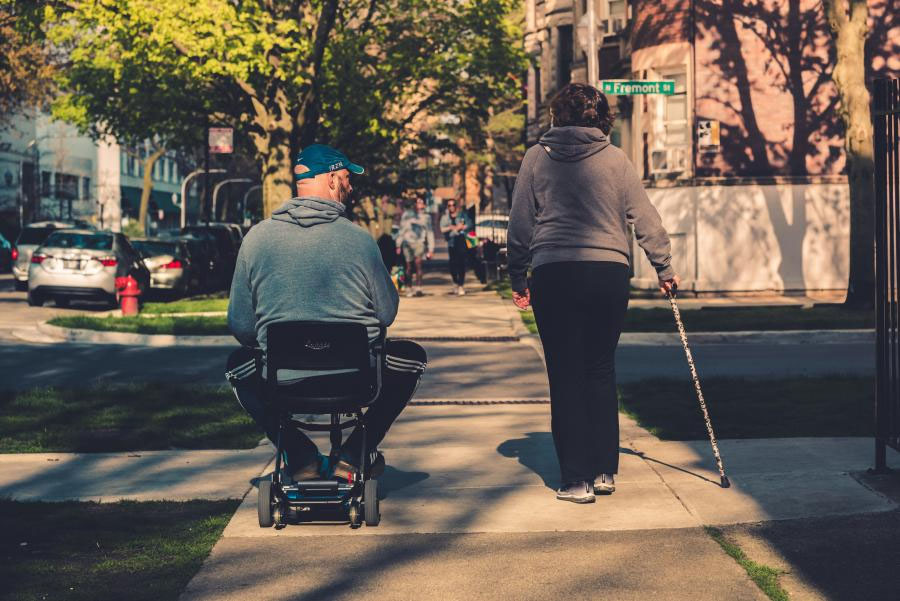
How To Protect Your Business And Be ADA Compliant
The Department of Justice is charged with upholding and enforcing the Americans with Disabilities Act (ADA) with compliance regulations, lawsuits, and more. However, without a specific department for enforcement, it often relies on local governments to enforce ADA compliance. Since ADA covers several accessibilities rules for public spaces, this is a huge undertaking.
When the ADA was passed in 1990, many businesses and cities were given time to retroactively bring current buildings up to standard while new construction was expected to comply with ADA guidelines across the board, including parking lots, sidewalks, entrances, bathrooms, hallways, and more.
The Americans with Disabilities Act was passed over thirty years ago, and many businesses that serve the public are still working to become ADA compliant. This also means that many businesses are risking costly lawsuits.
Accessibility for all people is important. It benefits every individual, especially those with friends who need more accessible spaces. A more accessible business widens the potential client pool while avoiding ADA lawsuits.
Issues with ADA Compliance and Corresponding Lawsuits
Over the last thirty years, the DOJ has filed lawsuits for ADA violations. To settle, these lawsuits can be crippling to businesses.
In October 2012, three New York City top Zagat-rated restaurants faced a DOJ lawsuit for ADA violations. Their Zagat rating helped connect the chain to clients across the world, but they eventually fell under scrutiny for their lack of ADA compliance.
Many misunderstand that the ADA regulations apply to any entity that serves the public, ensuring that individuals with disabilities can easily access these locations. In the case of the NY Zagat-rated restaurants, the US Attorney's Office SDNY decided to prioritize achieving ADA compliance across the 50 most popular Zagat-rated restaurants in Manhattan.
In 2005, in New York, this same office focused on the accessibility of sixty hotels in Manhattan’s Time Square Theater District, and while most complied and agreed to bring their hotels up to standard when faced with gaps in their ADA compliance, five hotels refused and eventually faced lawsuits, suffering civil penalties and expensive litigation.
Meanwhile, in 2019, a lawsuit was filed against the City of Hudson in New York for inaccessible sidewalks and non-accessible entrances to City Hall, Promenade Hill Park, and other locations. The United States DOJ opened an investigation of Hudson, and in response, the city has implemented a compliance agreement and a sidewalk audit to meet ADA compliance guidelines.
Lawsuits stemming from a lack of ADA compliance can be avoided, saving money, bad publicity, and so much headache if proper preparation is taken.
Seek the aid of ADA Legal Experts
In the Manhattan Restaurant ADA Compliance Review situation in the 2010s, the restaurants were served a seventeen-page survey to assess their ADA compliance. The survey asked questions about the restaurant’s physical aspects from entrances to restrooms. The DOJ was also interested in the digital footprint of the restaurant too, examining their website accessibility, written accessibility procedures, and more.
If your business faces an ADA compliance survey from a government entity, this is a legal document that may be the start of a lawsuit if your business does not check out. It can be crucial to work with an ADA lawyer to fill out the paperwork and determine a plan to meet ADA standards that may have been missed.
Prepare for Voluntary Compliance
The DOJ wants to see ADA standards met without a costly lawsuit, and one way to ensure that is to enter voluntary compliance agreements with businesses. These are legal and binding documents. When a business fails to follow through on its voluntary compliance agreement, the DOJ has a paper trail to prove that failure.
As your business strives to meet ADA regulations, investigation, and surveys, your business must take all the necessary steps to ensure ADA compliance in order to avoid a lawsuit.
Who’s Responsible for ADA Compliance?
Every restaurant is managed differently — some restaurants have multiple owners and operators, while others have a single individual responsible for those roles. In other cases when that business is renting its space, the owner of the building and not the restaurant is held responsible. This means that many people can be responsible for ADA compliance. A building owner can be held responsible for a leasing business’s failure to be ADA compliant.
Building owners, building lessees, and business operators must all prioritize accessibility issues in order to avoid ADA compliance lawsuits.
ADA compliance is not only the law, but it’s a great way for businesses and cities to be inclusive of all people. This is one of the best ways to serve your clients and the public.
At StrongGo, we believe in building a more accessible world, and our industry experts can create custom solutions to fit your ADA compliance needs, whether new construction or a historical building. Contact us today.


